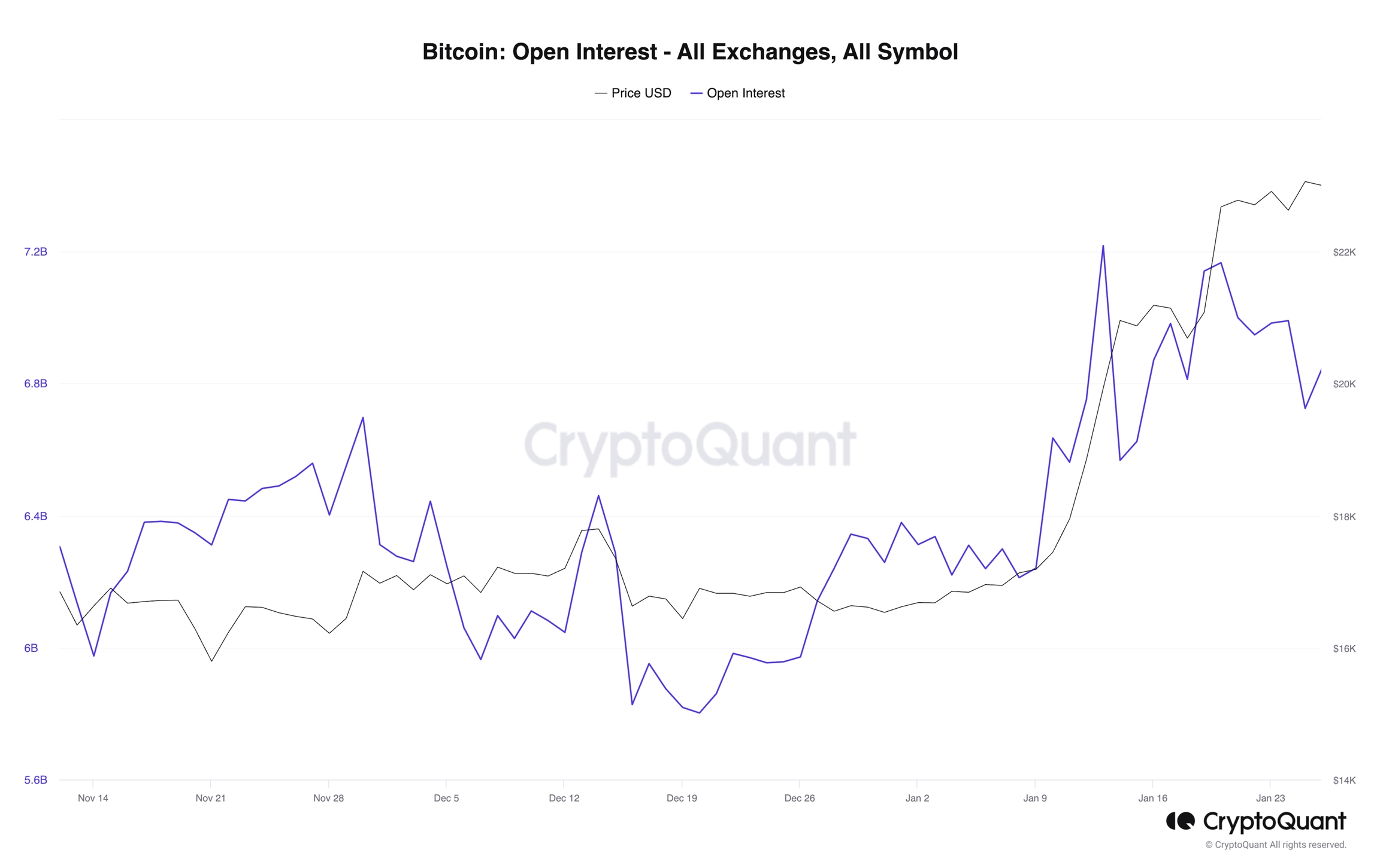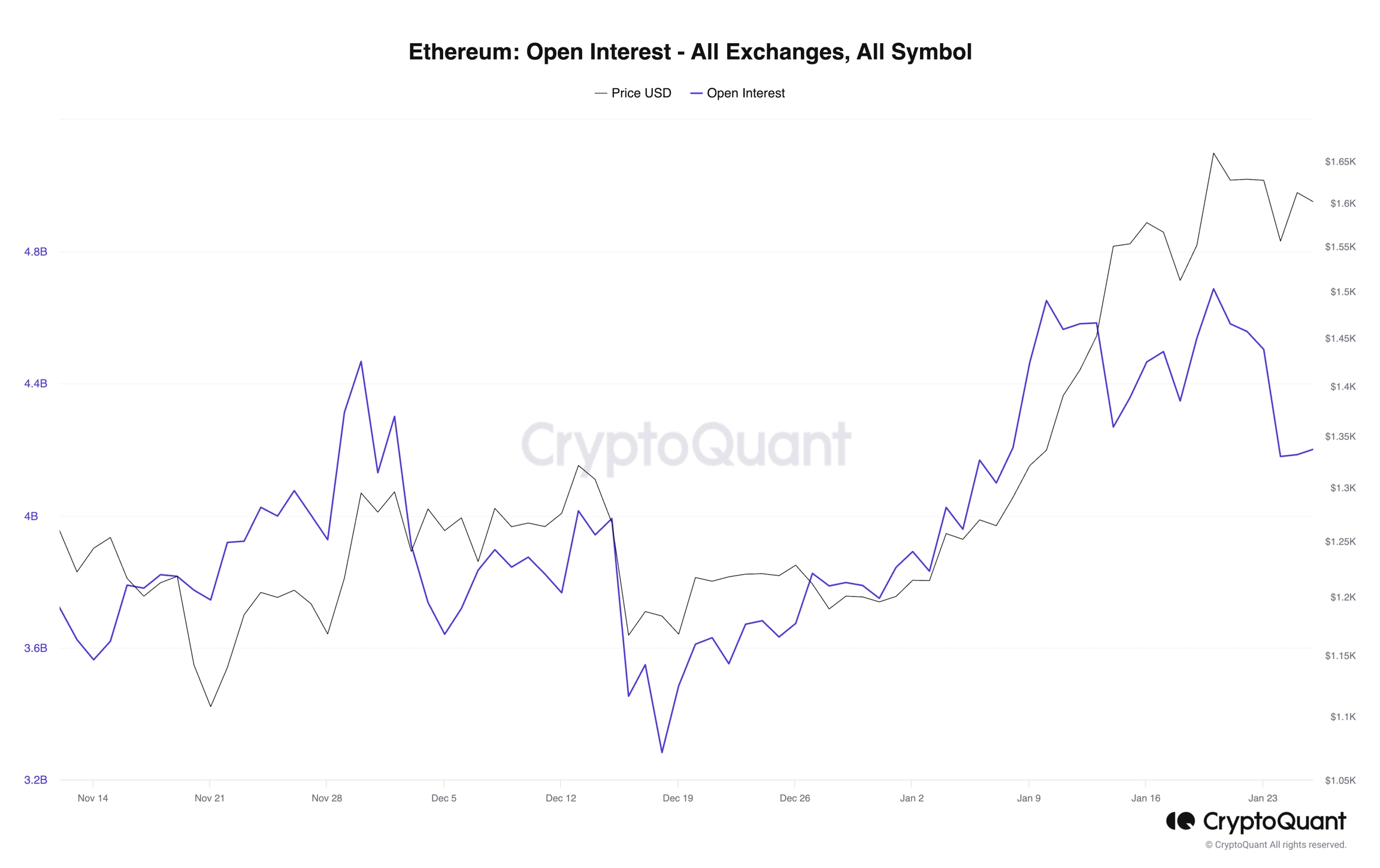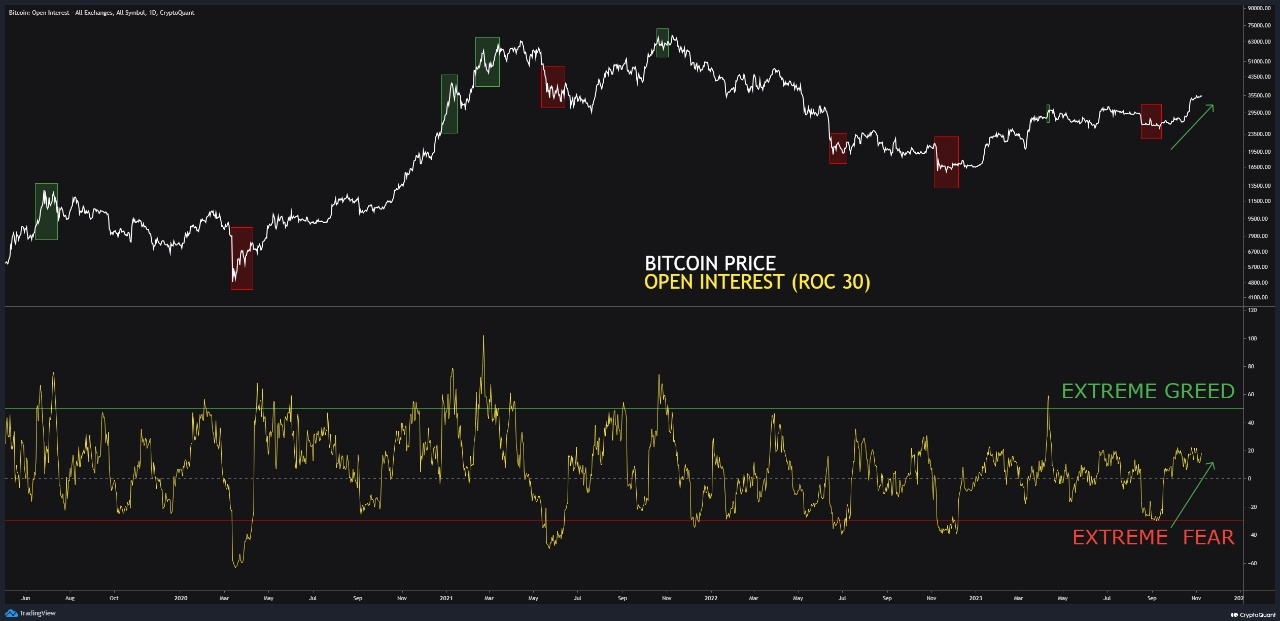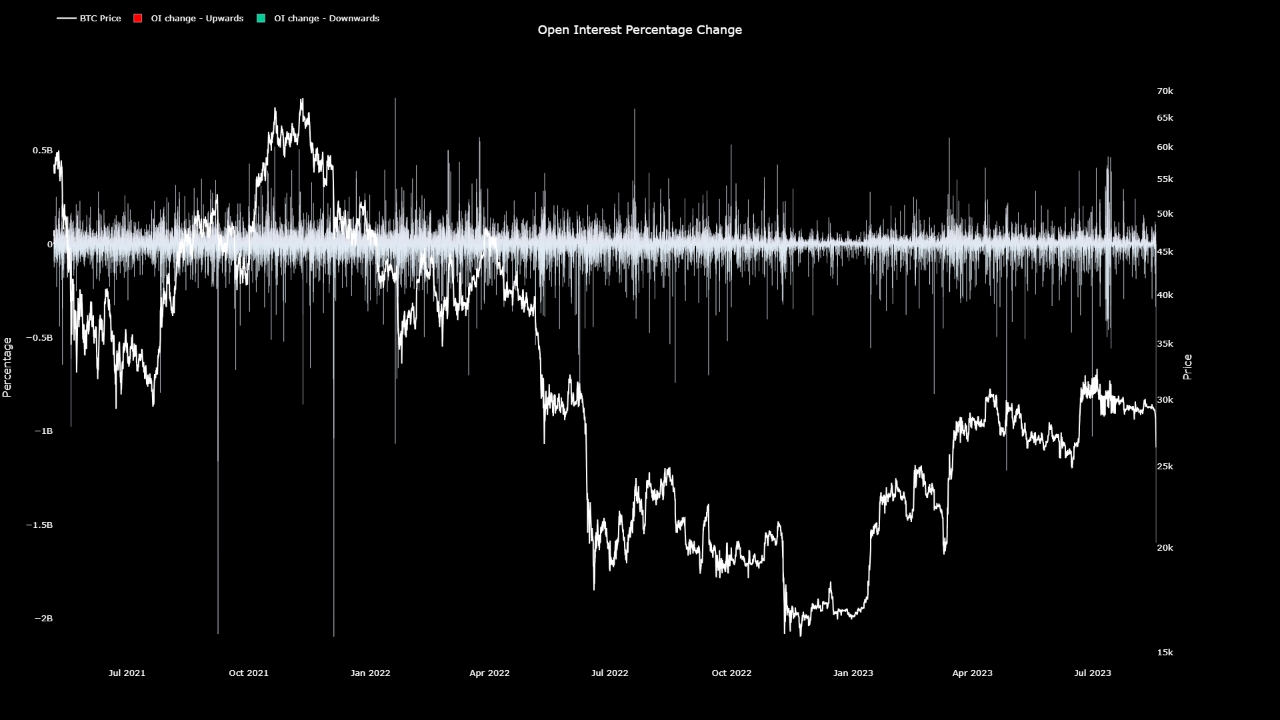Open Interest
Open interest is defined as the amount of open positions (including both long and short positions) currently on a derivative exchange's BTC/USD trading pairs.
Definition
Open interest is defined as the number of open positions (including both long and short positions) currently on a derivative exchange's BTC/USD trading pairs.
Interpretation

A large value of open interest can indicate increased volatility in the price of BTC. For this reason, an open interest chart could also be useful for determining the market tops and bottoms with additional indicators.
Increasing: Adding liquidity, volatility, and attention + supporting ongoing price trend
As positions and contracts are continuously being opened, it indicates more liquidity, volatility, and attention are coming into the derivative market. Increasing trend in OI could support the current ongoing price trend.
Decreasing: Exiting liquidity, volatility, and attention
As Open Interest (OI) decrease, it indicates futures contract/ positions are being closed. In turn, this might trigger the possibility of long/short squeeze caused by sudden price movement or vice versa.
Understanding Open Interest

Open interest plays a pivotal role in the world of cryptocurrency trading, and generally speaking especially on derivative exchanges. By exploring the concept in more detail, traders and investors can gain valuable insights into market trends and make informed decisions.
Why Open Interest Matters
While the definition of open interest is quite straightforward, its interpretation and real-world implications are more profound. Here's why open interest matters:
Volatility Indicator: One of the primary reasons open interest matters is its role as a volatility indicator. When open interest is high, it signifies increased activity in the BTC/USD derivative market. This heightened activity often leads to greater price volatility.
Timing Market Tops and Bottoms: In addition to measuring volatility, open interest can serve as a valuable tool for timing market tops and bottoms. Traders can use open interest charts alongside other indicators to enhance their market analysis and decision-making.
The Relationship Between Open Interest and Price Trends
Understanding the relationship between open interest and price trends is crucial. Here's how these two aspects are interconnected:
Increasing Open Interest

When there is a high open interest amount, it signifies several important factors:
Adding Liquidity: As open interest increases, more participants and new money entering the market means increased liquidity, making it easier to enter or exit positions.
Heightened Volatility: A higher open interest often coincides with higher price volatility, providing trading opportunities.
Market Attention: Higher open interest indicates more market participants are paying attention to the BTC/USD derivative market.
As open interest increases this can lend support to the existing price trend, whether it's bullish or bearish.
Decreasing Open Interest

Conversely, when there is a low open interest indicates different dynamics in the market:
Exiting Liquidity: As open interest decreases, participants are closing their positions, potentially signaling a decline in market sentiment and liquidity.
Reduced Volatility: Lower open interest may lead to reduced price volatility, making the market less attractive for traders.
Shift in Attention: A decrease in open interest might suggest a shift in market attention to other assets or trading opportunities.
A low open interest can also trigger events like short squeezes or long squeezes, resulting from sudden price movements.
Practical Applications
The value of open interest extends beyond mere observation. It can be practically applied in various ways:
Timing Market Moves: By closely monitoring open interest alongside other technical indicators, traders can better time their entries and exits, potentially maximizing their profitability.
Volatility Analysis: Open interest's strong correlation with market volatility makes it a useful tool for traders looking to capitalize on price swings.
Statistical Correlation Analysis: Statistical analysis reveals a positive correlation between open interest and volatility. This finding provides traders and investors with a data-driven approach to understanding market dynamics.
Insights from Trading Volume, Market Participants, and Futures Contracts
The interplay between trading volume, market participants, and futures contracts significantly influences open interest in the cryptocurrency market. Higher trading volumes boost liquidity and increase price volatility, attracting more market participants and subsequently elevating open interest.
Various market players, including retail traders, institutions, "whales," and miners, influence both trading volume and open interest. Futures contracts, central to cryptocurrency derivatives, also shape open interest through leveraged positions and hedging strategies. These dynamics underpin the cryptocurrency market and are crucial for traders and investors.
Use Case
Statistical Correlation Analysis to Volatility
We find that open interest (independent variable) and volatility (response variable) are statistically in positive correlation where p-values of F-statistic (for linear model) and the slope are less than 0.001. R-square of the model is estimated as 0.36 where the value is reasonably high considering financial raw data.

The settings for this experiment are the followings:
We consider date range from '2018-11-05' to '2020-06-01'.
We resample the data in 15 days to compute volatility.
Volatility is computed as subtraction of max to min value of every resampled window.
Values in the above chart are in log form.
Link to Our Data
Last updated
Was this helpful?